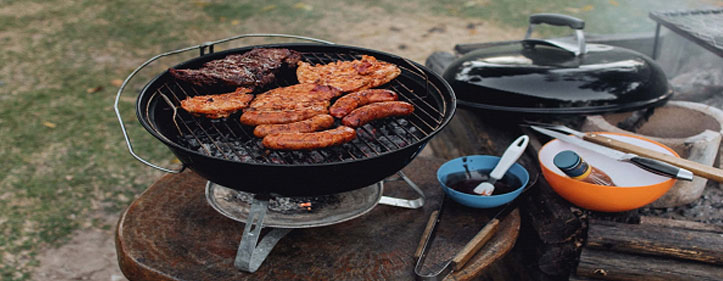Summer Food Safety Tips

Here’s the simple truth: Foodborne illnesses are the most common in the summer when outdoor cooking reigns supreme and high temperatures promote bacterial growth. But this doesn’t have to ruin your picnic. There are many ways to combat conditions that are conducive to bacterial growth, and we have just the recipe.
Here’s our list of food safety ingredients to help keep your stomach from churning.
1. Defrost Foods Safely
The biggest tip to take home if you’re doing refrigerator thawing: for every 5 pounds of meat you’re preparing to cook, you’ll need 24 hours to dethaw safely within a refrigerator set at 41°F. Most items will remain safe for 3 - 5 days in the refrigerator, and can be refrozen without cooking.
A great alternative method to the refrigerator thaw is cold water thawing. To do this method properly, the food must be set in a leak-proof bag, submerged in cold tap water that changes out every 30 minutes. According to the United States Department of Agriculture Food Safety and Inspection Service (USDA), it’s estimated that it takes 30 minutes per pound to thaw meats properly. If you’re in a hurry, there’s always the defrost button on any kitchen microwave. However, if you’re using this method, it’s imperative that you cook the meat directly afterward.
What not to do: According to the United States Food and Drug Administration (FDA), you should never ever thaw frozen foods on the countertop at room temperature. The reason here being that even though the center can still be frozen, the outer layer could be in the "Danger Zone", which the FDA defines as the temperature range between 41°F and 135°F. When raw food is allowed to stand at room temperature, some bacteria can produce toxins that cause foodborne illness, even if the food is then cooked to the correct temperature.
2. Keep Raw Food and Ready-to-Eat (RTE) Food Separate
Here on the Responsible Training blog, we’ve talked at length about cross-contamination. Nearly 48 million Americans get sick from foodborne illnesses each year, and cross-contamination is a huge factor. Avoid cross-contamination by giving raw foods and ready-to-eat foods their own cutting board, serving dish, platter and serving utensils; have all employees properly wash their hands (15 - 20 seconds using soap and hot water), especially in between tasks; and clean and sanitize all food contact surfaces after use.
3. Keep the Cooler Out of Sunlight
And yes, even out of the the trunk of your car. If it helps, you can leave the cooler indoors or wherever provides the most optimal cooling. The warmer the cooler is, the more opportunity your food has to become a breeding ground for bacteria.
4. Prep at Home
If possible, chop any fruit, meat, or vegetables at home. That way, you can easily place them in a sealed container in the cooler and will have less opportunity for cross-contamination at the park.
5. At the Grocery Store, Make the Meat Aisle Your Last Destination
A shopping cart can quickly turn into a bacteria breeding ground during the long cruise down grocery store aisles. On average, most people spend 43 minutes in the store and it only takes 2 hours for bacteria to start growing on meat. How long is your drive home?
6. Keep Your Drinks Separate From the Perishable Foods
This is one most people don’t think about. You grab a drink, crack it open, sip. But what has already melted in the cooler? Ice from thawing meat or old vegetables can give anyone a foodborne illness.
7. Don’t Reuse Marinades
Seriously, just don’t do it.
8. Don’t Leave Condiments Out
Even though foodborne illness typically originates from plant- and animal-derived foods, some condiments can be the source of foodborne illness as well.
9. Buy More Ice Than You Think You Will Need
It’s going to melt so you may as well load up, anything to ensure that your cooler stays at or below 41°F.
All content here should be considered as opinion only. Always seek the direct advice of your own doctor in connection with any health questions or issues.

